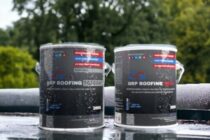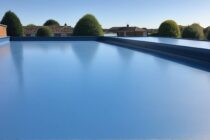GRP Roofs vs. Other Materials
Navigating the extensive realm of roofing materials can be an overwhelming task, considering the multitude of choices available. In this landscape, Glass Reinforced Plastic (GRP) roofs have emerged as a leading contender, showcasing a compelling blend of durability, waterproofing, and versatility. However, how does GRP compare to traditional roofing materials like asphalt shingles and concrete tiles? Let’s conduct a detailed comparison to empower you to make an informed decision for your roofing requirements.
GRP Roofs: A Showcase of Performance
GRP roofs are recognised for their exceptional attributes, including:
- Durability: Demonstrating longevity, GRP roofs boast a lifespan exceeding 30 years, exhibiting resilience against cracking, corrosion, and harsh weather conditions.
- Waterproofing: The seamless construction of GRP eliminates vulnerabilities in joints and seams, ensuring a watertight shield against the elements and preventing leaks.
- Versatility: GRP’s malleability allows it to be molded into various shapes and sizes, catering to a diverse range of architectural designs, from flat roofs to intricate slopes.
- Lightweight: Surprisingly lightweight, GRP roofs reduce the load on supporting structures, making them suitable for various building types.
- Low Maintenance: Unlike traditional materials requiring frequent upkeep, GRP roofs offer remarkable longevity with minimal maintenance, translating into cost-effective ownership.
Balancing Pros and Cons: GRP vs. Traditional Roofing Materials
While GRP roofs excel in numerous aspects, it’s crucial to consider both their advantages and drawbacks:
GRP Roofs: Pros:
- Exceptional durability
- Seamless construction for watertight protection
- Versatility in design
- Lightweight, reducing the load on supporting structures
- Minimal maintenance requirements Cons:
- Higher initial installation costs compared to some traditional materials, but potential for longer lifespan
- Professional installation recommended for a flawless finish, though DIY users can tackle installs with proper research
Asphalt Shingles: Pros:
- Cost-effective upfront
- Variety of colors and styles to suit aesthetic preferences Cons:
- Limited lifespan compared to GRP roofs
- Susceptible to damage in extreme weather conditions
Concrete Tiles: Pros:
- Exceptional durability and fire resistance
- Aesthetic appeal complementing traditional architecture Cons:
- Heavy weight, requiring a robust supporting structure
- Demands regular maintenance to maintain integrity
Maintenance Checklist: Keeping Your GRP Roof in Top Condition
Regular maintenance is crucial for ensuring the longevity and performance of your GRP roof. Consider the following seasonal tips:
- Clean the roof surface thoroughly to remove debris and prevent algae growth.
- Inspect the roof after severe weather events for any signs of damage or wear.
- Examine seals and joints closely for any signs of deterioration.
GRP Roofs vs. Other Materials Common Issues and Solutions:
- Cracks: Promptly apply GRP repair kits to address cracks before they spread.
- Leaks: Identify and repair any damaged areas immediately to prevent water ingress.
- UV Damage: Reapply UV-resistant coatings when necessary to protect the roof from the sun’s harmful rays.
Expert Insights: FAQs on GRP Roofs
Q1: How long can I expect my GRP roof to last? A: With proper maintenance, GRP roofs can last for 30 years or more, providing exceptional value for your investment.
Q2: Can GRP roofs be installed on any type of structure? A: Yes, GRP’s versatility allows for installation on a wide range of roof structures, including flat, pitched, and complex slopes.
Q3: Can I install a GRP roof myself? A: While DIY projects can be tempting, it’s highly recommended to seek professional installation for GRP roofs. Their expertise ensures a watertight, durable finish that will withstand the test of time.
GRP Roofs vs. Other Materials, Staying Ahead of the Curve: Trends in the GRP Roofing Industry
The GRP roofing industry is continuously evolving, adapting to changing homeowner and architect preferences. Key trends to watch include:
Staying Ahead of the Curve: Trends in the GRP Roofing Industry
The GRP roofing industry is constantly evolving, adapting to the changing needs and preferences of homeowners and architects. Key trends to watch include:




